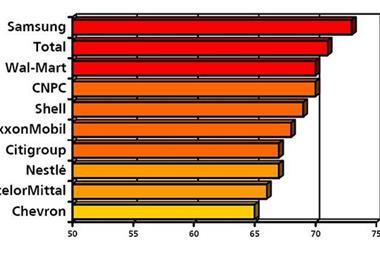Companies are using risk engineering to analyse their biggest vulnerabilities and ensure they remain in business
It could be a winter storm that tears through Europe’s industrial heartland. A biblical deluge that drowns out whole regions. Or a massive fire that lays waste to a key manufacturing location. The risks are all around, but exactly what constitutes the biggest threat to business continuity and therefore corporate reputation may not be as apparent. For many companies risk engineering is becoming a priority to help reveal, analyse and ultimately mitigate some of these risks.
As supply chains become ever more complex and interrelated there is a corresponding need to pinpoint threats and take proactive measures to avoid disruption. The stakes are that much higher when a single facility services whole sections of the business.
It’s this globalized trading environment that encouraged Marc Schaedeli, head of risk management, Nestlé, to implement a risk engineering/loss prevention programme. The company discovered that fire was its biggest vulnerability, accounting for almost two thirds of insured property losses. He said: ‘We could be compensated financially by our insurers after the event, but that doesn’t compensate for the loss of trust, reputation and image.’ Risk engineering has enabled Nestlé to reduce its property losses and up the amount of risk it retains through a captive.
Heinz Risi, director of corporate insurance and risk management for lifts company Schindler, explained that he used risk engineering to establish a benchmarking tool to see how different business units dealt with risk. Along with incentives, it’s an approach that has helped the group avoid any major fire since 1991. Global supply partners are a high risk for Schindler and for this reason the company now audits them. Risi has built into their supply agreements clauses that allow his risk engineers access to their facilities.
Willem Leyds, a risk engineer with AkzoNobel, found that risk engineering delivers the biggest competitive advantage in the supply chain arena, by ensuring a facility stays open for business. With his risk assessment, Leyds discovered that a chemicals plant in Sweden was an ‘unacceptably’ high risk. Following his advice to diversify the risk, AkzoNobel rebuilt the facility with much better protection in China.
“We could be compensated financially by our insurers after the event, but that doesn't compensate for the loss of trust, reputation and image.
Marc Schaedeli, head of risk management, Nestle
Risk engineering isn’t all about protecting a building or key piece of machinery, a big part of it is surveying the organisation and achieving good visibility of risk. And it’s hard to argue against the fact that organisations with more advanced risk assessment capabilities experience fewer losses. Those that do are able to devise ways to help manage their risks.
A FULL INVESTIGATION OF HOW COMPANIES ARE USING RISK ENGINEERING FOLLOWS IN SEPTEMBER's ISSUE OF STRATEGICRISK.
More analysis: Loss prevention from the ground up
The risk managers quoted here are all clients of Zurich Risk Engineering.

















No comments yet